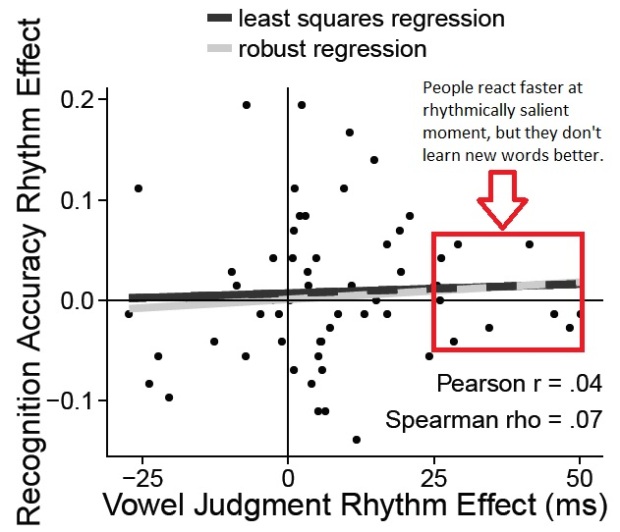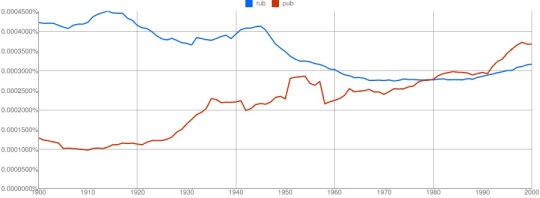Do you know the feeling of a musical piece moving you? What is this feeling? One common answer by psychological researchers is that what you feel is your attention moving in sync with the music. In a new paper I show that this explanation is mistaken.
Watch the start of the following video and observe carefully what is happening in the first minute or so (you may stop it after that).
Noticed something? Nearly everyone in the audience moved to the rhythm, clapping, moving the head etc. And you? Did you move? I guess not. You probably looked carefully at what people were doing instead. Your reaction illustrates nicely how musical rhythms affect people according to psychological researchers. One very influential theory claims that your attention moves up and down in sync with the rhythm. It treats the rhythm like you treated it. It simply ignores the fact that most people love moving to the rhythm.
The theory: a rhythm moves your attention
Sometimes we have gaps of attention. Sometimes we manage to concentrate really well for a brief moment. A very influential theory, which has been supported in various experiments, claims that these fluctuations in attention are synced to the rhythm when hearing music. Attention is up at rhythmically salient moments, e.g., the first beat in each bar. And attention is down during rhythmically unimportant moments, e.g., off-beat moments.
This makes intuitive sense. Important tones, e.g., those determining the harmonic key of a music piece, tend to occur at rhythmically salient moments. Looking at language rhythm reveals a similar picture. Stressed syllables are important for understanding language and signal moments of rhythmic salience. It makes sense to attend well during moments which include important information.
The test: faster decisions and better learning?
I, together with Suzanne Jongman, asked whether attention really is up at rhythmically salient moments. If so, people should make decisions faster when a background rhythm has a moment of rhythmic importance. As if people briefly concentrated better at that moment. This is indeed what we found. People are faster at judging whether a few letters on the screen are a real word or not, if the letters are shown near a salient moment of a background rhythm, compared to another moment.
However, we went further. People should also learn new words better if they are shown near a rhythmically salient moment. This turned out not to be the case. Whether people have to memorise a new word at a moment when their attention is allegedly up or down (according to a background rhythm) does not matter. Learning is just as good.
What is more, even those people who react really strongly to the background rhythm in terms of speeding up a decision at a rhythmically salient moment (red square in Figure below), even those people do not learn new words better at the same time as they speed up.
It’s as if the speed-up of decisions is unrelated to the learning of new words. That’s weird because both tasks are known to be affected by attention. This makes us doubt that a rhythm affects attention. What could it affect instead?

Figure 1. Every dot is one of 60 participants. How much a background rhythm sped up responses is shown horizontally. How much the same rhythm, at the same time, facilitated pseudoword memorisation is shown on the vertical axis. The red square singles out the people who were most affected by the rhythm in terms of their decision speed. Notice that, at the same time, their learning is unaffected by the rhythm.
The conclusion: a rhythm does not move your attention, it moves your muscles
To our own surprise, a musical rhythm appears not to affect how your attention moves up and down, when your attentional lapses happen, or when you can concentrate well. Instead, it simply appears to affect how fast you can press a button, e.g., when indicating a decision whether a few letters form a word or not.
Thinking back to the video at the start, I guess this just means that people love moving to the rhythm because the urge to do so is a direct consequence of understanding a rhythm. Somewhere in the auditory and motor parts of the brain, rhythm processing happens. However, this has nothing to do with attention. This is why learning a new word shown on the screen – a task without an auditory or motor component – is not affected by a background rhythm.
The paper: the high point of my career
You may read all of this yourself in the paper (here). I will have to admit that in many ways this paper is how I like to see science done and, so, I will shamelessly tell you of its merits. The paper is not too long (7,500 words) but includes no less than 4 experiments with no less than 60 participants each. Each experiment tests the research question individually. However, the experiments build on each other in such a way that their combination makes the overall paper stronger than any experiment individually ever could.
In terms of analyses, we put in everything we could think of. All analyses are Bayesian (subjective Bayes factor) and frequentist (p-values). We report hypothesis testing analyses (Bayes factor, p-values) and parameter estimation analyses (effect sizes, Confidence intervals, Credible intervals). If you can think of yet another analysis, go for it. We publish the raw data and analysis code alongside the article.
The most important reason why this paper represents my favoured approach to science, though, is because it actually tests a theory. A theory I and my co-author truly believed in. A theory with a more than 30-year history. With a varied supporting literature. With a computational model implementation. With more than 800 citations for two key papers. With, in short, everything you could wish to see in a good theory.
And we falsified it! Instead of thinking of the learning task as ‘insensitive’ or as ‘a failed experiment’, we dug deeper and couldn’t help but concluding that the attention theory of rhythm perception is probably wrong. We actually learned something from our data!
PS: no-one is perfect and neither is this paper. I wish we had pre-registered at least one of the experiments. I also wish the paper was open access (see a free copy here). There is room for improvement, as always.
— — —
Kunert R, & Jongman SR (2017). Entrainment to an auditory signal: Is attention involved? Journal of experimental psychology. General, 146 (1), 77-88 PMID: 28054814

